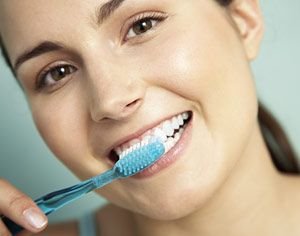Why Prioritizing Oral Health Is Essential for Your Overall Wellness
What does the phrase “oral health” mean to you? No new cavities at your dental checkup? That’s certainly part of it. But it’s really so much more than a lack of tooth decay. Good oral health means a mouth that’s free of disease – which can range all the way from mild gingivitis (gum inflammation) to oral cancer; a bite that functions well enough for you to eat without pain and get ample nutrition; and a smile that lets you express your happiest emotions with confidence. Simply put, oral health is a crucial component of your overall health and well-being.
It’s important to realize that small – and readily treatable – problems in your mouth can become more complicated, painful and expensive if neglected for too long. Some of these oral health conditions may even have ramifications throughout the whole body. Gingivitis, for example, can sometimes progress to periodontitis – a more serious form of gum disease that can loosen teeth and cause them to fall out. Missing teeth can lead to bone loss in the jaw and inadequate nutrition. And numerous studies have shown that people with severe gum disease may be at increased risk for developing cardiovascular disease. The moral of this story: Routine maintenance can pay off big.
What You Can Do to Stay Healthy
 One of the most important things you can do to safeguard your oral health is to maintain a daily oral hygiene routine that effectively removes plaque from your teeth. It’s the bacteria that thrive in the plaque biofilm that cause so many oral health problems. Effective oral hygiene involves brushing your teeth twice daily with a fluoride toothpaste and flossing at least once per day to remove plaque from between the teeth.
One of the most important things you can do to safeguard your oral health is to maintain a daily oral hygiene routine that effectively removes plaque from your teeth. It’s the bacteria that thrive in the plaque biofilm that cause so many oral health problems. Effective oral hygiene involves brushing your teeth twice daily with a fluoride toothpaste and flossing at least once per day to remove plaque from between the teeth.
Nutrition and lifestyle choices also play an important role. You don’t have any control over hereditary factors that may predispose you to gum disease – but you do have control over how much sugar you eat and when you eat it; how often you exercise; whether you smoke; and how often you visit the dentist.
How Dentistry Can Help
If you only see a dentist when problems arise, you may be missing out on some important benefits! As doctors who specialize in oral health, dentists offer a wide range of preventive services. At your regular exams, for example, you will be checked for any signs of oral cancer, tooth decay, gum disease, and other oral infections; hard-to-reach deposits from your teeth will be cleaned; and you can get answers to any questions you have on topics ranging from oral hygiene issues to the connection between oral health and systemic diseases.
So please don’t wait for a serious problem to come up before you make an appointment at the dental office. Having regular checkups could save you lots of time, aggravation, and cost in the long run. It could even save your teeth! Working together, we can take proactive steps toward a healthy future.
Share your thoughts. Communication is an extremely important part of the smile makeover process. At the first makeover consultation, it helps if you describe what you would like to change in as much detail as possible. Bring along pictures of smiles you like, or of how your own smile used to look. Your makeover dentist will have some thoughts to share with you as well because dentists are trained to look at smiles in terms of facial balance. In other words, a dentist will look not only at how the elements of a smile (teeth, lips and gums) relate to each other, but also how they blend in with the face as a whole.
Make a plan. An important part of planning a smile makeover is a comprehensive dental exam. Cosmetic dentistry offers an amazing array of lifelike tooth restorations and treatments; but first, any conditions in your mouth that may jeopardize a good result must be taken care of. If your teeth are discolored, for example, the reason must be determined. You may have an underlying dental disease that needs to be treated before whitening your teeth; otherwise, the whitening may not last. Likewise, if you often drink red wine or other beverages that stain, you might do better with porcelain veneers than bleaching treatments.
Try it out. A smile makeover is an investment that is meant to last. That’s why many of the procedures performed are irreversible. So if you are contemplating some changes, it’s a great idea to try them out before you fully commit to them. There are many ways to preview the results: computer imaging, 3-D models, and even placing temporary restorations on your teeth so you can see what the final results will look and feel like in your own mouth. This also allows a fine-tuning of the makeover plan.
A “trial smile” is a great way to eliminate unknowns in the makeover process. But when it’s all done, there’s still one thing you may not be prepared for: how great it feels to flash your new smile to the world!

